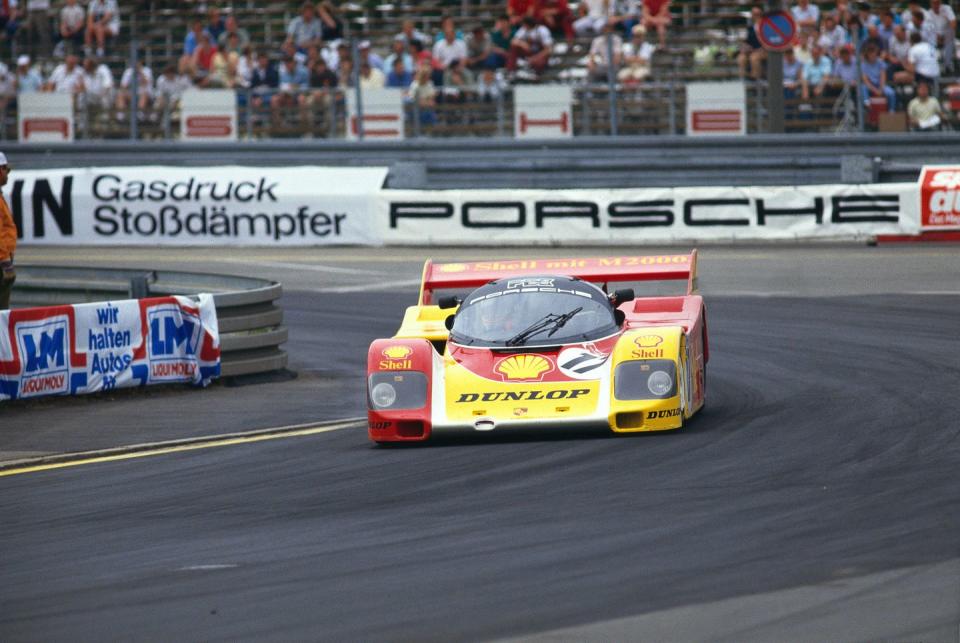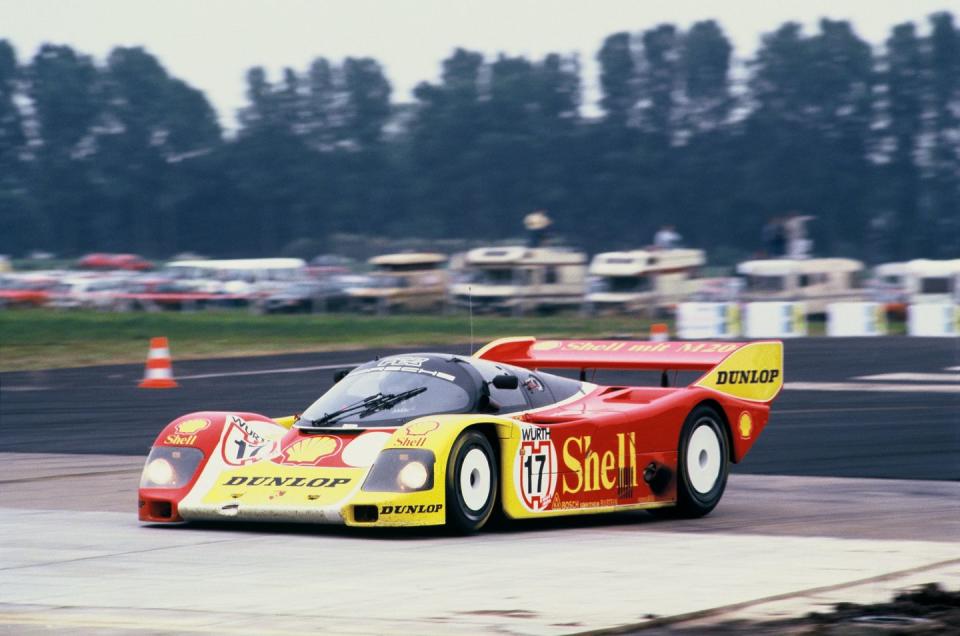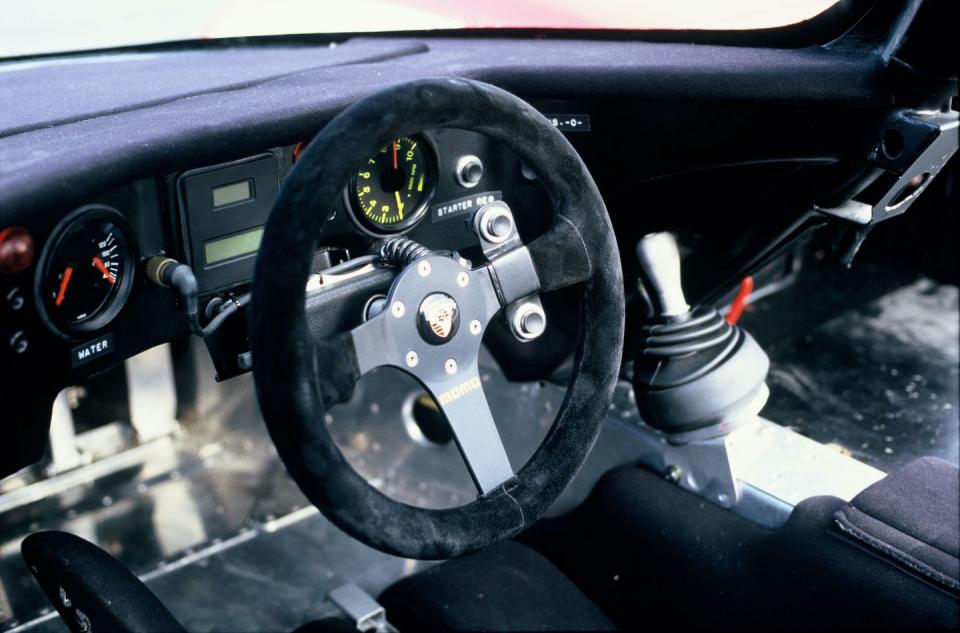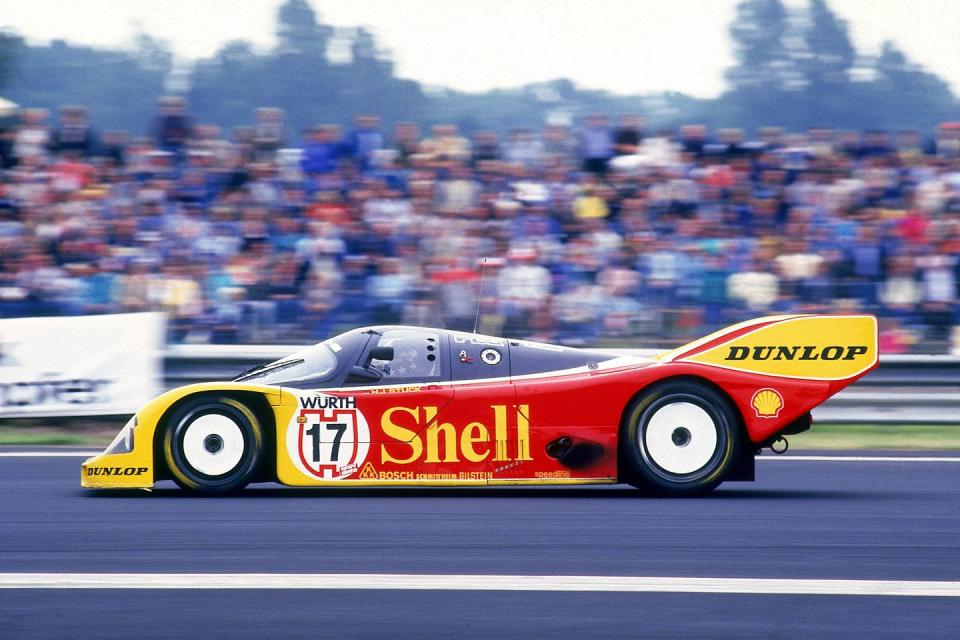Porsche's PDK Gearbox Traces Its Roots to the 962


For most of the automobile’s history, getting the most out of your sporty car involved ordering it with a manual transmission. Today’s world is much different; modern automatic and dual-clutch gearboxes have caused the mighty manual to all but disappear from enthusiast vehicles.
That said, even the most ardent manual supporters have been known to occasionally levy praise on the gearbox arguably most responsible for this shift: Porsche’s Doppelkupplungsgetriebe. The PDK, as it’s more commonly known, may have only arrived on Porsche's road cars back in 2009, but the gearbox is actually about to celebrate its 40th birthday. For a better understanding of the early days of PDK development, Road & Track sat down with some of the men behind PDK’s eventual success.
Development of the PDK can be traced back to the 1970s. The impact of the mid-70s fuel crisis led to the German government studying methods of improving fuel economy. Porsche played a role in this investigation. By 1979, the German Federal Ministry of Research and Technology concluded its study with the help of the nation’s automakers, and Porsche determined that a dual-clutch transmission provided a massive economy benefit over traditional torque-convertor automatics.
It's worth noting that Porsche did not invent the technology that underpins dual-clutch transmissions for this study; the proposition for such a gearbox first arrived in the 1930s and was designed by Adolphe Kégresse. This study wasn’t even the first time a dual-clutch had been discussed within the company. During the 1960s, Porsche engineer Imre Szodfrid updated Kégresse’s design, though it proved difficult to perfect in a pre-computer era. Still, after the 1979 study concluded, the automaker moved forward with developing a new prototype.

PDK’s earliest test mules would come in 1981 by way of 924 and 924 Turbo models, with engineer Rainer Wüst leading the project. Wüst noted that development began with some serious reworking of Szodfrid's earlier efforts, as the totally mechanical layout had to go. Instead the team would utilize a complex system of electrohydraulic actuators to handle shift duties.
“At the time I think we were 15 or 20 years ahead, which is a lot of time when looking at putting it into production,” Wüst told Road & Track. “ I was convinced that PDK was a good technology, but at the time that we developed PDK, there were not components for mass production. There were no pressure regulator valves, other control valves, or any of the electronics. We were using the prototype electronics, as at the time the first engine electronics were coming into play. We used an electronics box from an engine and modified it for the gearbox. All of these parts in our time were pre-developed, but not mass production available.”

These early dual-clutch prototypes, which didn’t yet carry the PDK name, are similar in function to the units we’re used to seeing today. The gearbox featured a clutch pack in place of a traditional flywheel, which consisted of two dry clutches. These clutches could be independently controlled via the hydraulic pressure in the system, and each was attached to one of two overlapping shafts. As with modern dual-clutch units, one of these shafts featured even numbered gears while the other handled the odd numbers. All of the drive gears shared a single output shaft, which in turn allows one clutch to engage while the other disengages mid-shift. The efficiency benefits of the design were of initial interest, but the system also proved it could speed up shift times compared to a traditional stick. This reduced shift time offered a huge benefit for Porsche’s turbocharged engines, as drops in boost pressure were reduced.
From there, PDK was destined to go racing.

Porsche’s head of research Helmut Flegl would begin development of a PDK gearbox for the 956 race car starting in 1982. The 956 racer featured a heavily turbocharged Type 935 2.65-liter flat-six engine, providing around 635 hp. Such high output was far beyond what a 924 Turbo was pumping out, and as a result the prototype gearbox was reworked once again. This upgraded transmission would be internally known as the Type 2612, though the Porsche Doppelkupplungsgetriebe name was soon to follow. The gearbox wasn’t an immediate success, with 1983’s initial testing in South Africa and France both resulting in gearbox failures. The dry-clutches utilized by PDK in particular were struggling with overheating; the clutch pack had no way to effectively dissipate heat. This led to excessive wear and even outright warping of the discs. Unfortunately for Porsche, the race debut of the gearbox at Imola in 1984 ended during the first practice lap of the session. Things improved over the year, but PDK was still a ways off from motorsport dominance. With 1985 on the horizon, Porsche enlisted the help of a local gentleman named Hans-Joachim "Strietzel" Stuck, who was known to be, shall we say, a bit quick.
Stuck recalled in an interview with Road & Track that he was immediately interested in becoming a development driver for the PDK program, as Porsche’s facility in Weissach was only a short commute from his home. This proximity to the facility allowed the driver to have a bit of an unusual arrangement with the automaker.
“There were some actions where the mechanics would top off the tank at four o’clock. They went home, or maybe the crew chief was there, and I’d empty the tank and put the car in the garage and then drive home,” said Stuck. “I did so many thousands of kilometers of testing.”

Almost as soon as Stuck began interacting with his development vehicle, which at that point had evolved into the 962, the racing driver was sold on the technology. While it was undeniable that the transmission was still in need of some reliability improvements, the benefits from the driver’s seat were already present.
“From the moment I drove the car at Weissach, I was convinced about the system,” said Stuck. “Because shifting without going off the throttle makes you faster actually in a race from corner to corner. The standard synchronized gearbox was very nice, but you had to go off of the throttle, push the clutch, put the gear in, which was an area where the PDK could find time.

Stuck would bring his own ideas to the PDK program during these development days, such as the concept of a push-button shifter. Instead of motivating a traditional shift lever back and forth, drivers would instead select gears with buttons found on the right side of the steering wheel. The button above the spoke would handle upshifts, while a button placed below the spoke controlled gears on the way down. By allowing drivers to keep their hands on the wheel at all times, Stuck believes PDK improved both concentration and driver safety during dice-ups on track.
“It made sense right from the go, because there was more concentration on the driving,” said Stuck. “For example, in 1977 when I was driving Formula 1, we had to shift 1,300 times. We basically drove the race with one hand, and it was the same in the 962. The car had no power steering, and with the downforce the car had very heavy steering, and with PDK we could leave both hands on the wheel.”
Despite the issues presented by the dry-clutches, PDK would start to see some real racing success in 1986. A PDK-equipped 962 wheeled by Stuck and teammate Derek Bell would take a victory at Monza that year. Stuck went on to later win the inaugural ADAC Würth Supercup series in 1986 behind the wheel of a PDK-equipped 962. He’d defend that title a year later in a 962 C.
The car was clearly quick during these shorter events, though issues with clutch reliability kept the 962 from utilizing PDK for endurance racing. That said, this success didn’t come without some changes to the automaker’s race strategy. PDK cars quickly became known for drinking fuel at a higher rate than their manual-equipped siblings, as drivers were able to stay in the boost for longer and didn’t have to lift to shift. This created a problem in series where fuel limits were set in place.

The factory eventually developed a clever method of dealing with this issue. If a braking zone would typically begin at 300 meters, the drivers were instructed to instead lift off the throttle at around the 500 meter mark. Then the drivers would smash the brakes hard at around 250 meters. Over the course of the race this would save the drivers thousands of meters of full throttle driving, and proved beneficial in the hunt for efficiency on track.
“It was really a tricky thing to do,” said Stuck, “but it worked.”
Despite the PDK-equipped 962 providing a serious gain in performance over the stick-shift variant, only Porsche factory drivers had experienced the gearbox by the time it left official service after the 1987 season.
In the end, the lack of feasible wet-clutch solutions made the gearbox a challenging proposition for both racing and road car use. The varied friction provided by the dry-clutches made tuning the system inherently difficult, and didn’t provide the smoothness Porsche desired for road use.
Porsche began development of their own wet-clutches to fix this, which Wüst believes to be the first of their kind. Unfortunately, the automaker canceled the program before these units were completed. This wasn’t because the automaker didn’t have confidence in the design, but rather because Porsche wasn’t in the best financial situation during the late Eighties.

Things looked different for the automaker shortly after the turn of the century. By the time Boxsters and 996s were dotting dealer lots, Porsche’s interest in a road-worthy dual-clutch began to return. Their interest only heightened when stricter fuel economy regulations started to become a reality mid-decade, and interest in the fuel economy benefits of a dual-clutch came to the forefront. With other automakers looking to embrace the technology, Porsche finally had parts available from suppliers to make something special. With the help of ZF, PDK I would arrive for the 2009 model year.
This gearbox is based on the same principles as the Type 2612, though it features the ever important wet-clutch layout. Instead of arranging these clutches in tandem like before, Porsche opted to have the two overlap concentrically. This helps keep the transmission compact and lightweight, while providing space for an additional ratio compared to the manual alternative. Modern computers ensure that the hydraulic pressures are perfect for both normal and sporty driving situations, and can engage and disengage the clutches at varying rates. Several versions of PDK I were created, including one specifically tailored for the front-engined Panamera.
By 2017, the updated PDK II was ready. This eight-speed unit was designed specifically to help accommodate future electrification plans, and features some new approaches to the dual-clutch system. Instead of using two shafts to mount the gearsets, PDK II has four. This makes room for an electric motor, which can be found in the transmission case of the current hybrid models.
Efficiency isn’t the reason PDK has become so popular with enthusiasts. The gearbox has proven itself to be among the most responsive and quickest-shifting in the industry, while bringing some motorsport feel to the Porsche lineup. And while PDK might not replace a manual in outright engagement, there is a reason the majority of new Porsches come equipped with one.

Stuck, while admittedly biased in his feelings on the subject, is quite clear on where he stands on this still-raging debate.
“When I have the chance to have the choice between a PDK and a manual, I will 1000 percent take the PDK, even in the road car,” said Stuck. “I just love it. Maybe I am a little bit affected by having done PDK development, but it is so much easier to shift with more precision. So for me it's no choice which kind of gearbox I would use.”
In a span of just 40 years the PDK gearbox has gone from an obscure prototype to something many drivers interact with on a daily basis. It helped shape the modern era of the performance car, and looks poised to continue doing so in the era of hybridization. Yes, Volkswagen beat Porsche to the punch in releasing a dual-clutch for public consumption, but no brand is more synonymous with the technology. The development team may have been a good 20 years ahead of the curve back in 1981, but the result is a modern gearbox that still feels ahead of its peers. Whether or not you revere the stick-shift, we can all at least thank Porsche for building one of the best dual-clutches money can buy.

You Might Also Like

 Yahoo Finance
Yahoo Finance 